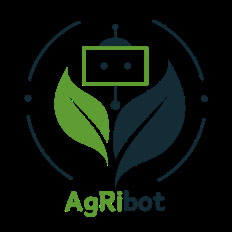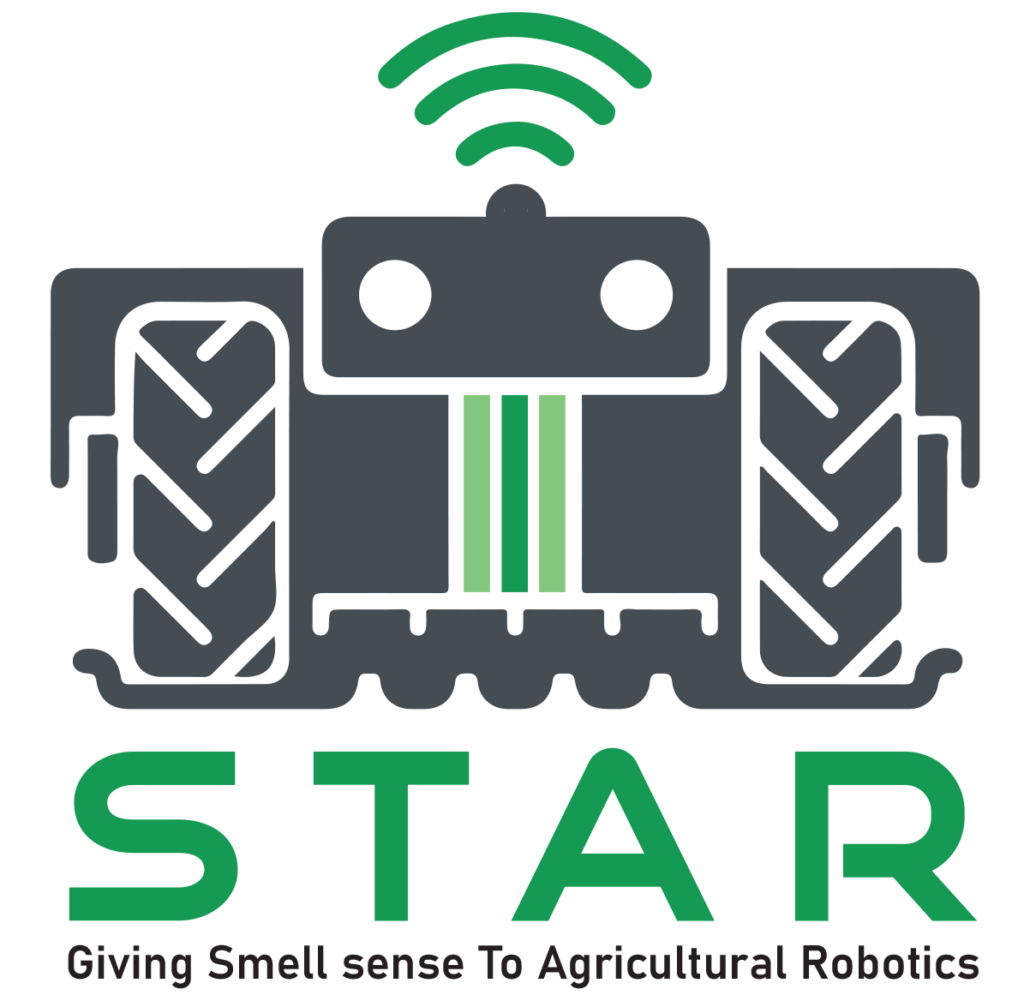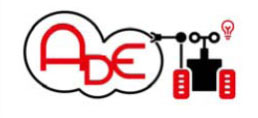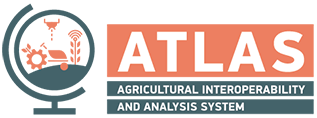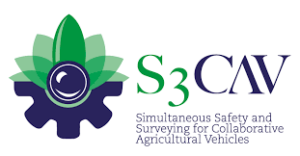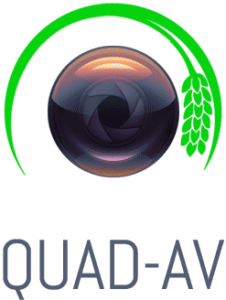AgRibot: Harnessing Robotics, XR/AR, and 5G for a New Era of Safe, Sustainable, and Smart Agriculture, HORIZON-CL6-2024-GOVERNANCE-01-7
AgRibot is a groundbreaking project aimed at advancing robotics as well as augmented and extended reality (AR/XR) technologies within the agricultural sector. The project’s overarching goal is to achieve a range of critical impacts including: improving working conditions, reducing
environmental footprint, addressing workforce shortages, and enhancing overall sustainability and competitiveness. In alignment with strategic initiatives such as the Farm-to-Fork Strategy, the Common Agricultural Policy post-2022, and the broader ambition of embracing the Digital Age, AgRibot is poised to drive a transformative shift toward a fair, safer, and resilient agriculture sector.
Giving Smell sense to Agricultural Robotics (STAR), ERA-NET COFUND ICT-AGRI-FOOD
Objective is to provide a farmer robot with the ability to single out healthy fruits/plants from those with problems and to selectively start the harvesting or apply a remedy without wasting resources or contaminating the environment is critical for precision farming. This project develops a unifying framework to combine different sensor modalities that include standard (e.g., RGB-D cameras) with novel sensors (e.g., gas sensors), methods for creating accurate maps to facilitate operations on a narrow scale with a smaller environment footprint, artificial intelligence algorithms for data processing and decision support, and applications to make relevant information easily visible to the farmer.
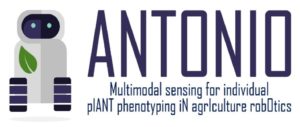
Multimodal sensing for individual plANT phenOtyping iN agrIculture robOtics, H2020 ICT-AGRI-FOOD
The overall goal of ANTONIO project is the development and implementation of multi-sensor systems and sensor processing algorithms to enable agri-robots to perform plant phenotyping and precision agriculture tasks, such as precise local application of pesticides/fertilizers and yield estimation. The envisaged idea is based on an integrated sensor network, including mobile sensors mounted on board of ground robots and drones. Information coming from the fixed sensing devices will flag “attention spots” in the crop for further local investigation by the robotic platforms.
Autonomous Decision Making in Very Long Traverses (ADE), H2020 Space Robotics Technologies
Objective is develop and test in a representative analogue a rover system suitable to increase data collection, perform autonomous long traverse surface exploration, guarantee fast reaction, mission reliability, and optimal exploitation of resources. ADE specific objectives:
- Autonomous long range navigation with high reliability.
- Consistent data detection / avoiding un-detection of interesting data
- Autonomous decision making capabilities in presence of conflicts
- Demonstration in a representative environment.
Dissemination video for the H2020 project Autonomous Decision Making in very long traverses Autonomous Decision Making in very long traverses (ADE) , Video courtesy GMV; Music “Battle of the kings” composed by Per Kiilstofte (Machinimasound)
Agricultural Interoperability and Analysis System (ATLAS), H2020 DT-ICT-08-2019 – Agricultural digital integration platforms
The goal of ATLAS is to achieve a new level of interoperability of agricultural machines, sensors and data services and enable farmers to have full control over their data and decide which data is shared with whom in which place. The technology developed in ATLAS will be tested and evaluated within pilot studies on a multitude of real agricultural operations across Europe along 4 relevant use cases:
- precision agriculture tasks along with implementation of robotic technologies.
- sensor-driven irrigation management
- data-based soil management
- behavioural analysis of livestock.
Simultaneous Safety and Surveying for Collaborative Agricultural Vehicles (S3-CAV), ERA-NET ICT-AGRI2 action
Precision farming relies on the ability to accurately locate the crops or leaves with problems and to accurately apply a local remedy without wasting resources or contaminating the environment. This project develops a unifying framework allowing incorporation of many different types of sensor data, methods for creating 3D maps and maximising map accuracy to facilitate operations on a narrow scale with a smaller environment footprint, methods for combining this data to make relevant information easily visible to the farmer, and methods for incorporating real-time sensor data into historical data both to increase precision during applications and to provide fast automated safety responses.
Ambient Awareness for Autonomous Agricultural Vehicles (QUAD-AV) , ERA-NET ICT-AGRI action
Autonomous vehicles are being increasingly adopted in agriculture to improve productivity and efficiency. For an autonomous agricultural vehicle to operate safely, environment perception and interpretation capabilities are fundamental requirements. The present project will focus on the development of sensors and sensor processing methods to provide an autonomous agricultural vehicle with such ambient awareness. The “obstacle detection” problem will be specifically addressed.
The obstacles that might be encountered in the field can be separated into four overall categories that should be detected and handled in different ways: positive obstacles, negative obstacles, moving people/animals/obstacles, and difficult terrain. Further, obstacles may vary greatly from situation to situation, depending on type of crop, fruit, vegetable or plant grown, curvature of landscape as well as other factors. Owing to the variety of situations and problems that may be encountered, no sensor exists that can guarantee reliable results in every case. Any candidate sensor has its strengths and drawbacks. Therefore, a complementary sensor suite should be used to gain the best performance.
The idea of this project is that of using different sensor modalities and multi-algorithm approaches to detect the various kinds of obstacles and to build an obstacle database that can be used for vehicle control. For instance, bearing and distance to the nearest collision can be estimated and used by the path planner to change route or to lower the speed if an obstacle is in close proximity to the vehicle’s planned path.

